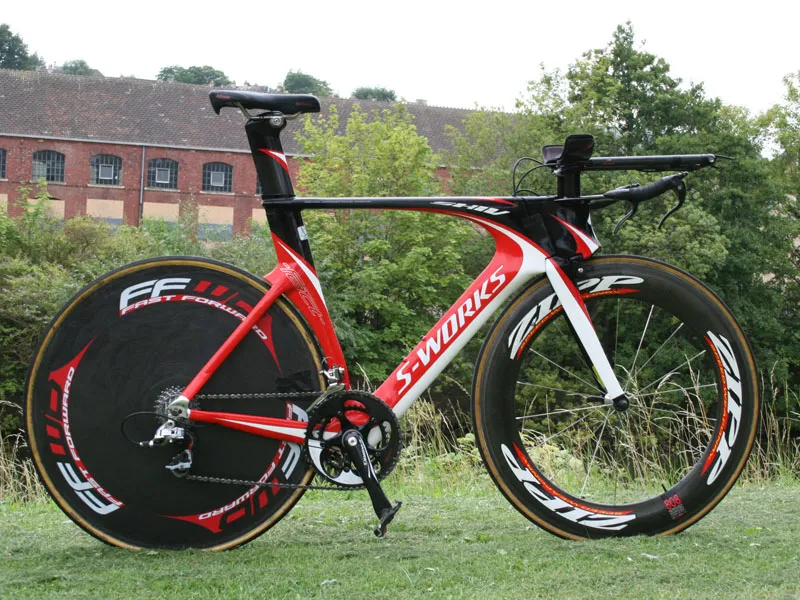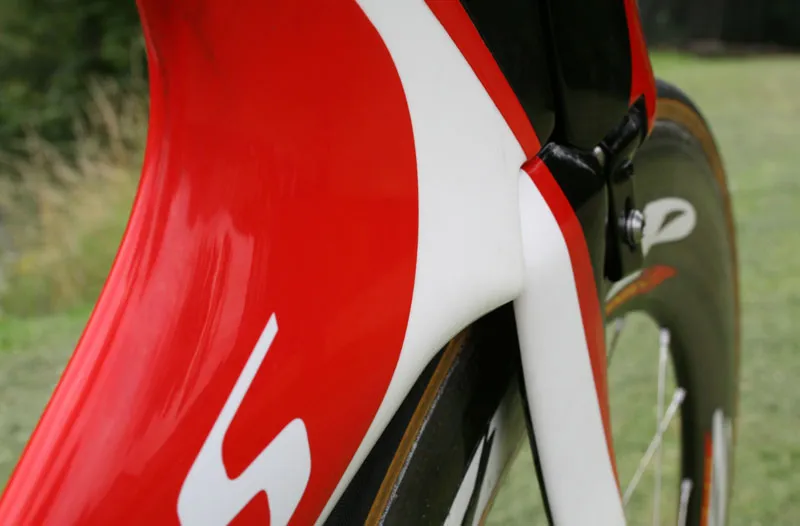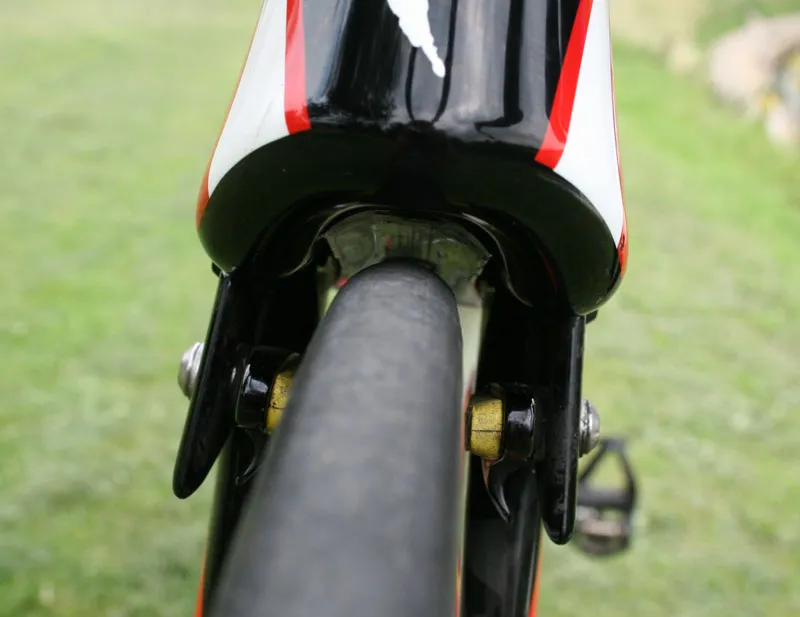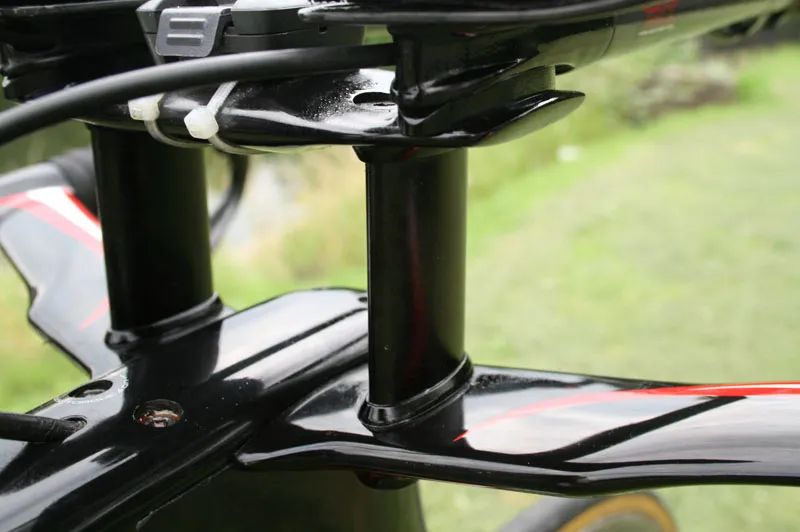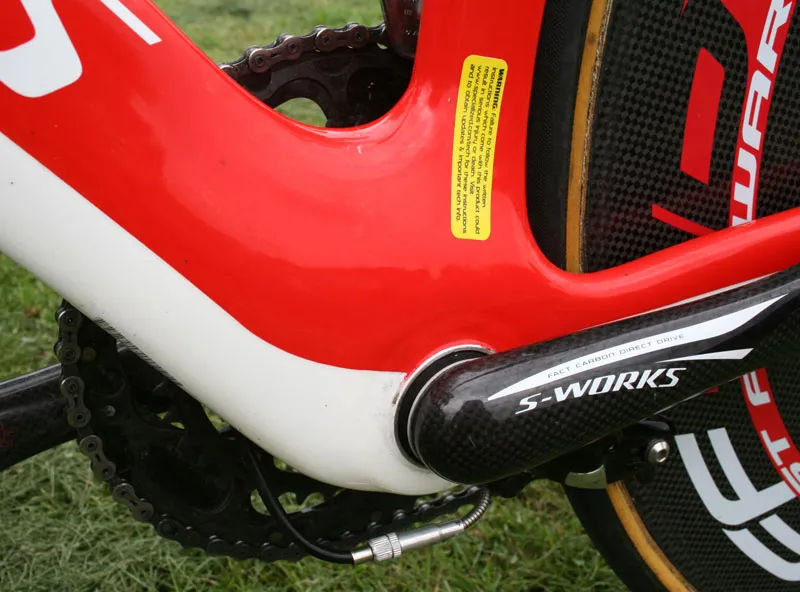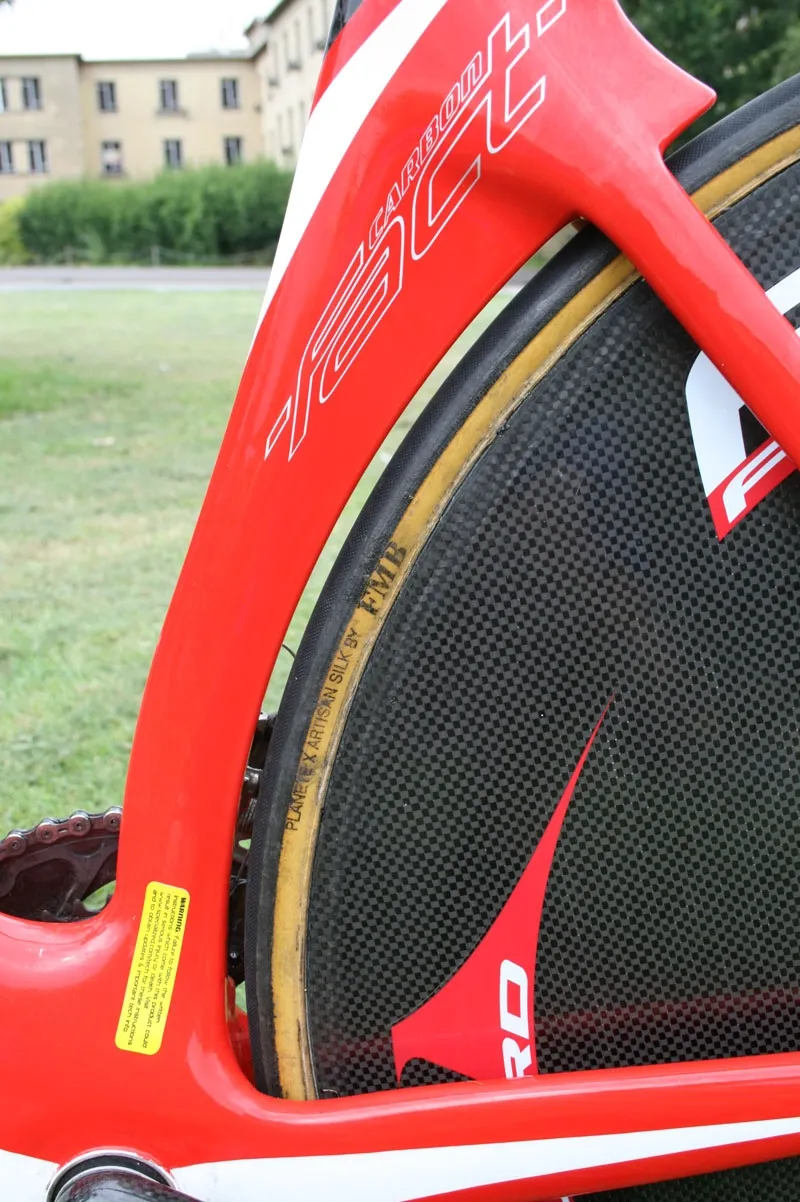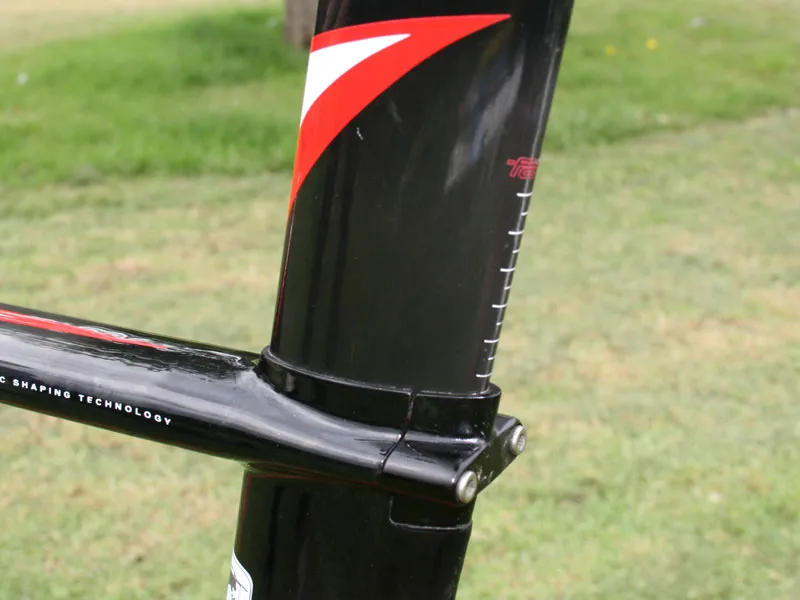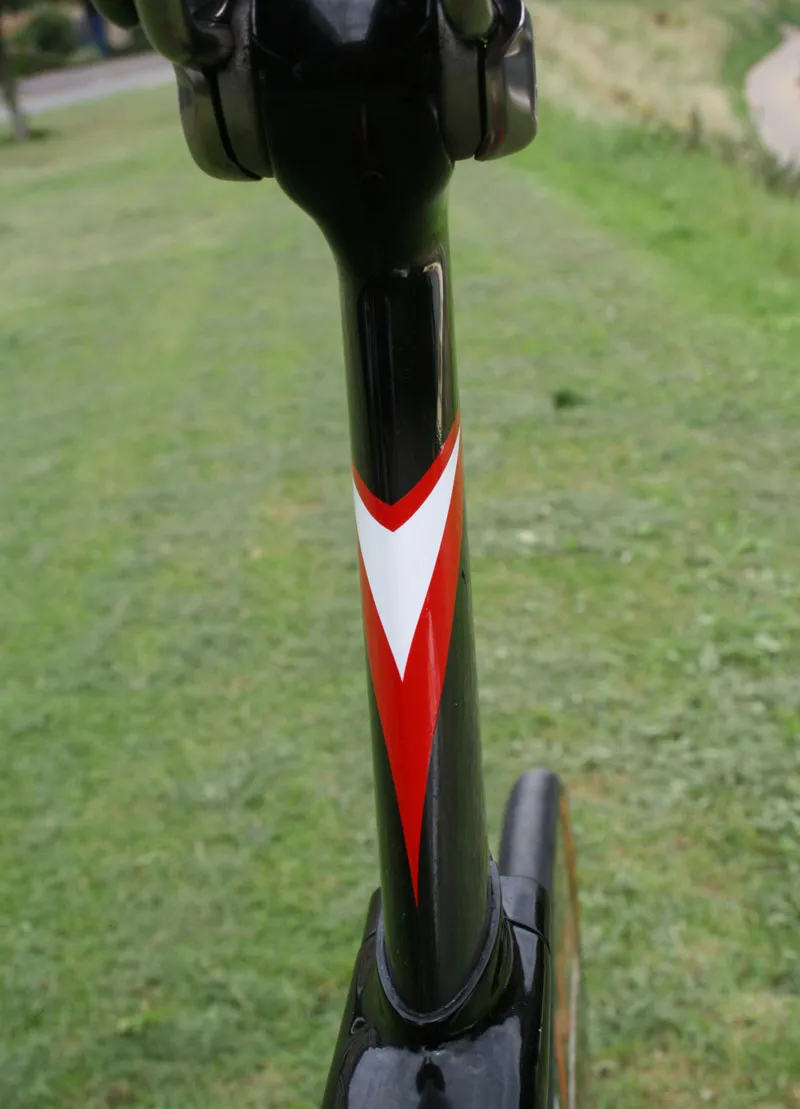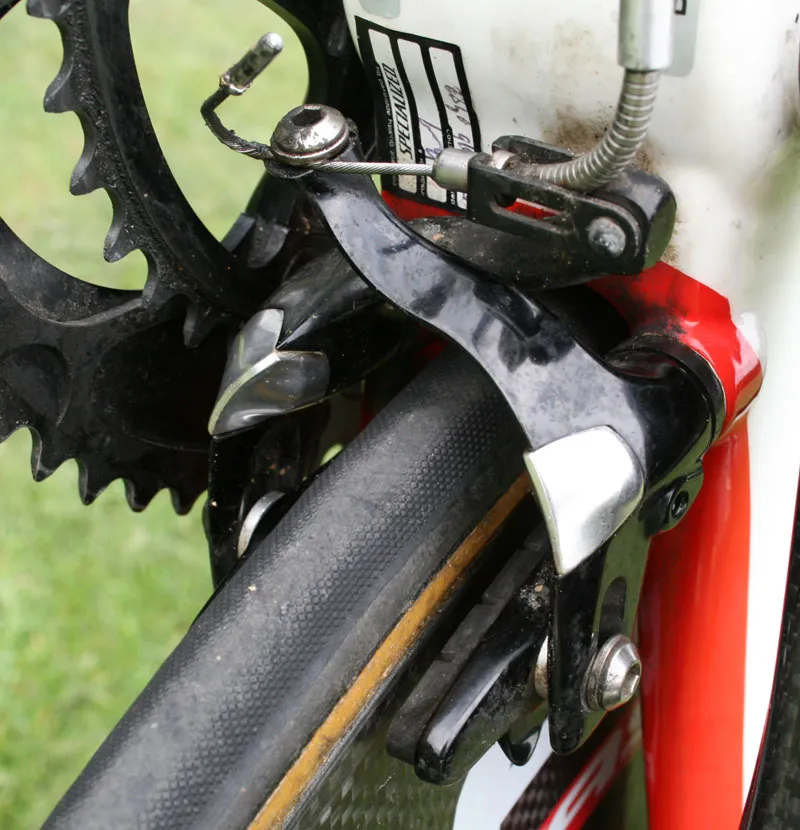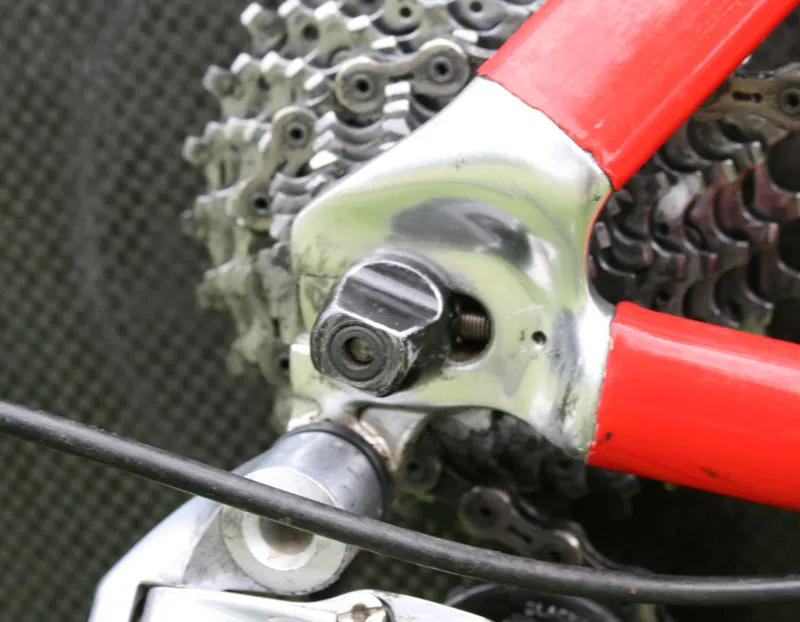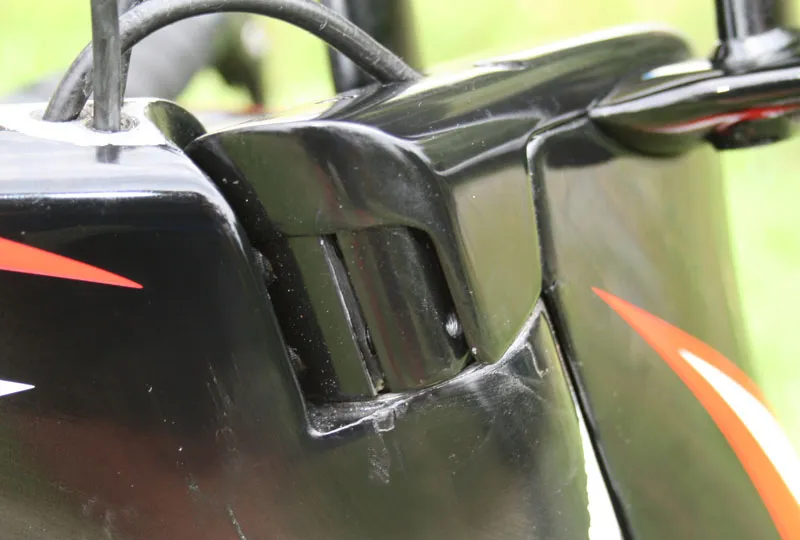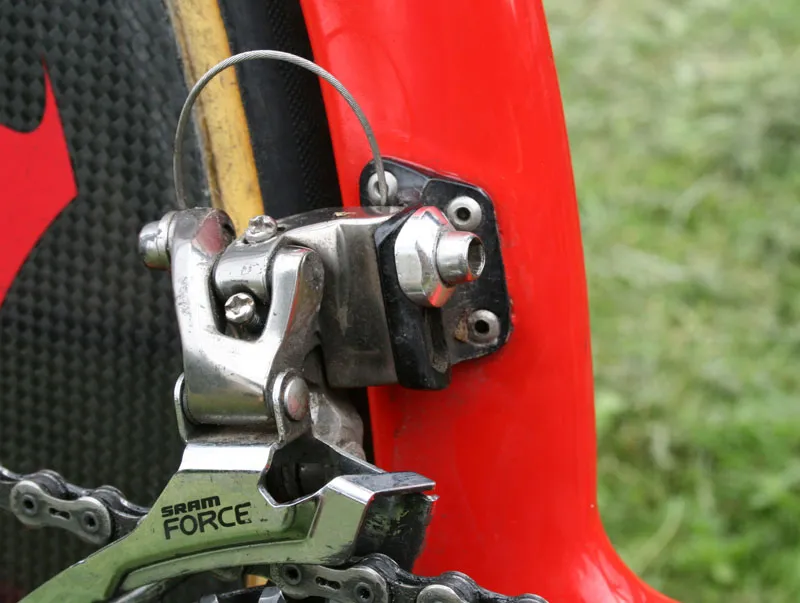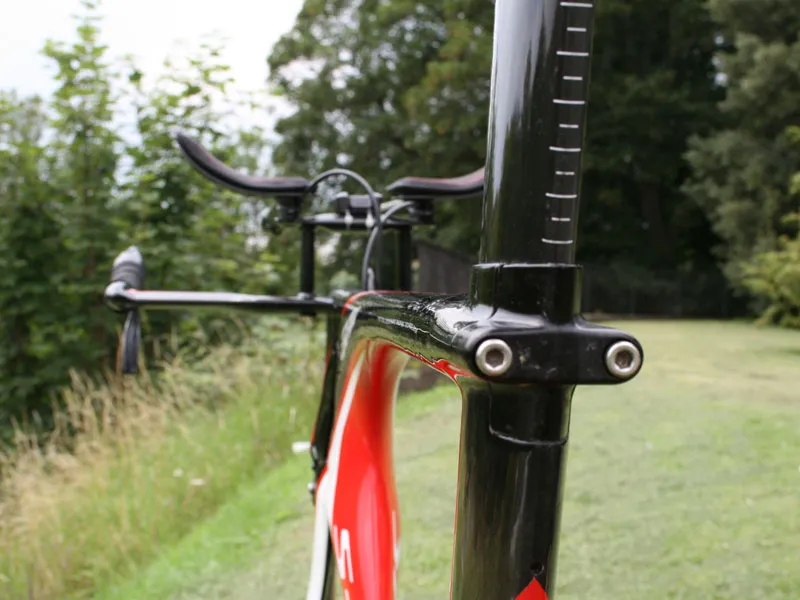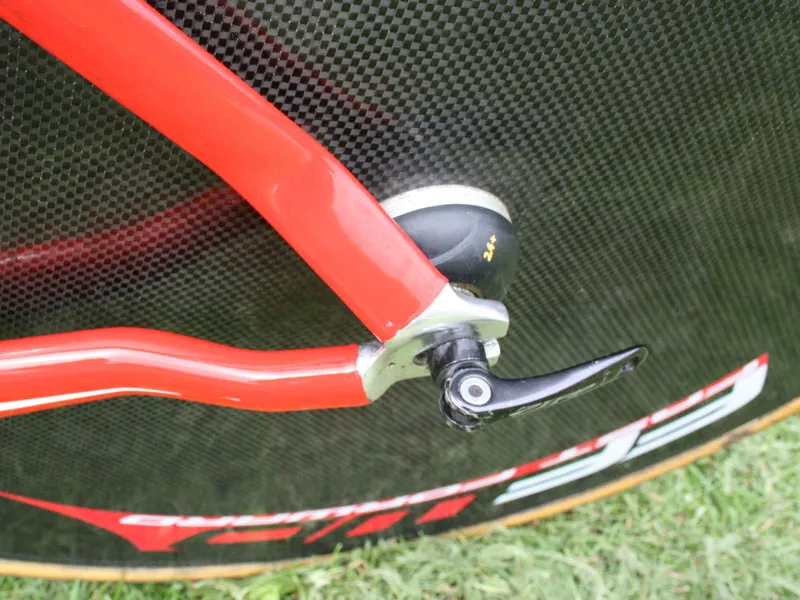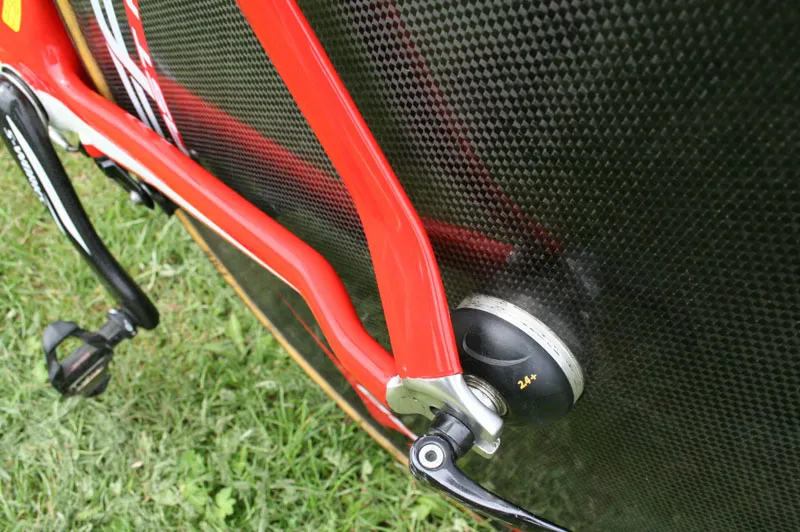We've had an original (non UCI-legal) Specialized Shiv frame module on test for several months now and it's time to report back on what we feel is one of the top time trial framesets on the market, with a potent mix of confident handling, efficient power transfer and light weight.
Ride & handling: Fast, balanced and agile
The Shiv's strong points are its out-and-out speed, stiffness, relatively light weight and incredible handling. It's rare to find a time trial bike that does all of this. For example its predecessor, the Transition, was very slippery and stiff but suffered in the weight and handling stakes.
The front end of the Shiv is all about reducing drag while retaining stiffness. Its distinctive nosecone flows into a deep head tube to create an elongated aero shape that can slice through the air, while the 1" to 1-1/8" tapered steerer keeps things stiff. The fork is bladed and set far enough out from the down tube and front wheel to minimise turbulence from the spinning wheel.
The brakes are integrated into the nosecone instead of being mounted separately in front of the bike in order to keep the front end as smooth as possible. The base bars are in line with the top tube and swept forward for better handling on tight corners. The extensions are mounted on height adjustable aero pillars and there's a wide channel underneath them for air to flow through and along the top tube.
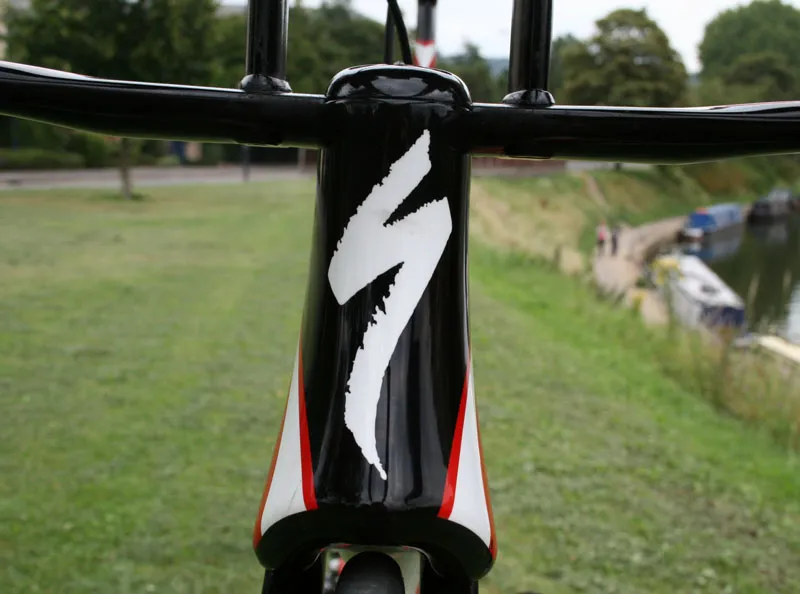
The front end
Similar attention to detail is paid to the rear of the bike, where the brake sits below the chainstays (like it did on the Transition) and the seat tube is cut out to profile the rear wheel, although there's a sufficient gap to allow for air to move freely around the wheel when it's spinning. The seatpost is a symmetrical aero shape, which means it can be reversed if you need more fore/aft movement in the saddle. There are also two holes to mount the saddle to, so the range of adjustment is quite wide.
Nearly all of this is designed to reduce drag but that's not the only important quality in a frame. Stiffness is essential – you don't want a bike that flexes when you put the power down and the Shiv certainly doesn't. Given it was designed with Fabian Cancellara, one of the most powerful time triallists in the world, in mind, that's not too surprising.
The combination of stiffness and slipperiness results in a bike that's addicted to speed. It accelerates quickly and stays there, and, like a Formula One car, it doesn't like going slow. We found in training it was 2-3km/h faster than our road bike (power, wheels and kit being the same). Most of that is the position, some of it's the frame.
The true test of any TT bike is in a race, and in full aero mode (pointy hat, skinsuit, shoecovers, fast wheels) we weren't disappointed: top 10s at the UK national 25- and 50-mile championships, top threes in national series events and personal bests at 10, 50, 100 miles and 12hrs (which was also a national record). There's no denying that the Shiv is a fast bike.
What really won us over, however, was its handling. With its huge nosecone and head tube it looks a bit like a tank. It doesn't steer like one though – it's as smooth and agile as any road bike and extremely confident when it comes to corners. We found ourselves flying down descents and around bends without moving from the extensions. When it came to technical corners, the alternative position on the cowhorns was well balanced and forward enough to take them smoothly.
In the weight department, the Shiv does well, despite its bulky front end. It wouldn't be too hard to build it up into a sub-8kg machine – light by time trial bike standards. As a result it climbs well, both on the extensions and on the cowhorns. Its aerodynamic qualities help too, both on the ups and the downs.
Frame & equipment: Adjustability and maintenance are our only niggles
The frame module tested here is the original Shiv, which can be used by time trialists and triathletes who don't race under International Cycling Union (UCI) or International Triathlon Union (ITU) rules. There's a UCI legal version out now, but it costs another £800. Our version is still a pricey £4,199.99/US$5500.
As it's a 'module' you get more than just a carbon fibre frame and fork for your money. The Shiv comes with its own handlebars, pads and aero extensions, Tektro aero brake levers with Specialized's own integrated front and rear brake calipers, a Specialized FACT carbon crankset (53x39), an integrated bottom bracket with ceramic bearings, and an aero seatpost.
That means you need to fit a chain, cassette, shifters and derailleurs, a saddle and wheels. For the record, we built ours up with SRAM Red, an Adamo Racing saddle, a FFWD Powerdisc and either a Zipp 808 or 404 front wheel, depending on conditions. We also did a lot of riding on it with a set of training wheels. All up, our size L (56cm seat tube) weighed 8.19kg/17.96lb, and it wouldn't be hard to get below 8kg with a lighter saddle or rear disc (our disc weighs 1,230g).
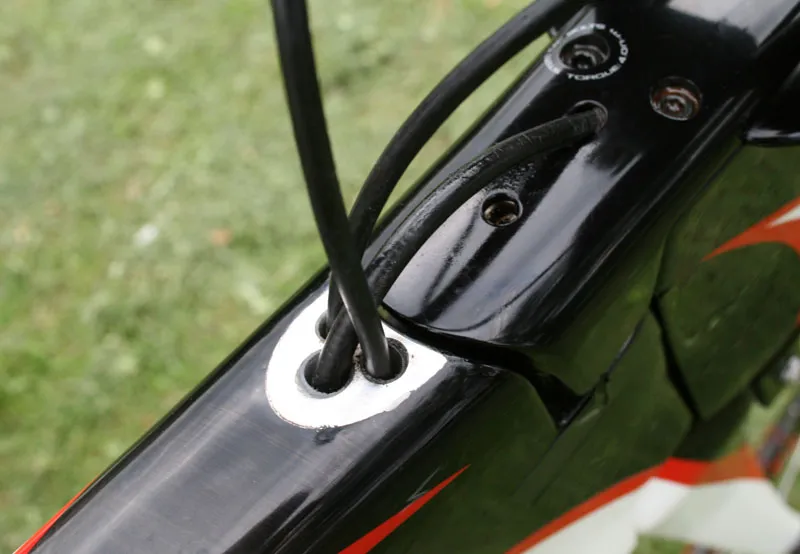
Internal cabling starts here
Modern high-end time trial bikes can be mechanics' nightmares, and the Shiv is no exception. Installing the cables through the bars and frame is fiddly and time consuming, and it's not something you can easily do yourself. The brakes are hard to get to, especially the front, and adjustability is limited. When we tried to run a 27mm-wide wheel at the front we found there just wasn't enough room between the brake blocks and rim to make it worthwhile – the limit was determined by the space between the fork blades so it wasn't adjustable beyond a certain point.
Speaking of adjustability, while we were happy enough with the height options for the extensions and the elbow pad width, we'd like to see more choice when it comes to setting the width of the extensions. There's only one set of bolt holes so if you want to go narrower or wider, you can't. In a similar vein, there's a small degree of angle adjustment but it would be nice to have a bit more. Given this frame was originally designed with UCI regulations in mind, which specify that the extensions must be in the horizontal plane, this isn't so surprising.
Despite these niggles, over time we were able to find a comfortable and fast position on the Shiv and that was borne out by some of the times we did on it. This is a frameset worthy of the best riders in the world, UCI or no.
